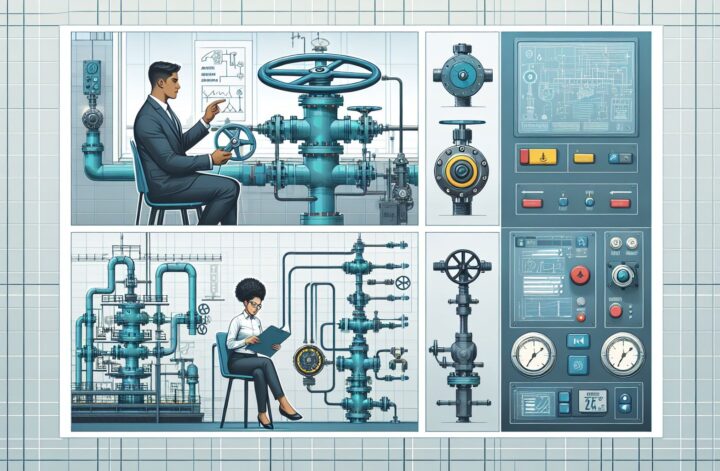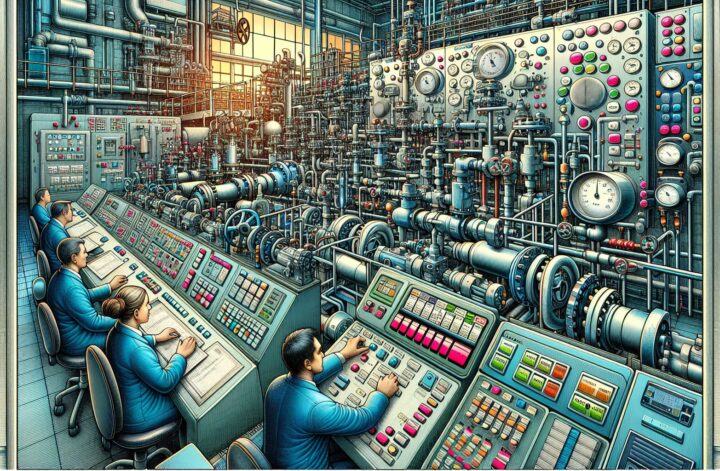With the evolution of technology, businesses are perpetually seeking ways to improve operational performance and efficiency. For industries where processes involve the regulation of fluids or gasses, achieving the optimal level of productivity can be as simple as improving valve control efficiency. By choosing proper control techniques and equipment, companies can significantly increase the performance of their production lines and raise profits.
Valve control plays a fundamental role in myriad sectors like oil and gas, water treatment, power generation, and more. A valve control system helps to regulate the flow rate of a mixture, ensuring that optimal operating conditions are maintained. In contrast, efficiency comes into play when discussing how well such a system can perform its job with the least possible waste of input resources.
Role of Control Valves in Industries
You might come across various types of control valves in an industrial setting, each designed to carry out specific tasks. For instance, pressure relief valves protect equipment from excessive pressure; ball valves control fluid flow, whereas choke valves control the flow of oil from wells, and so on. With such a variety of valves, it is pivotal to enhance their efficiency to ensure the entire system’s optimal performance.
Ways to Improve Valve Control Efficiency
There are numerous ways industries can improve their valve control systems’ efficiency. Here are some ways to do so according to experts:
1. Regular Maintenance and Inspection:
You might have heard the saying, “Prevention is better than cure.” This also applies to valve control systems. Regular inspection and maintenance play an integral role in the valve’s efficiency. Failing to perform these tasks can lead to various issues, including leaks that contribute to significant fluid losses [^1^].
2. Opt for Automated Valve Control Systems:
Incorporating automation into valve control systems can significantly increase the level of efficiency and performance. Automated systems adapt to changes in the operating conditions swiftly and accurately, thereby maintaining optimal performance at all times.
3. Use Advanced Valve Control Software:
Thanks to innovation in software development, valve control systems can now be guided and monitored by advanced software. These software solutions can control the valves, perfect precision, monitor the system’s condition, detect any malfunctions, and even perform certain maintenance tasks.
4. Energy Efficiency:
Last but not least, energy efficiency plays a critical role in increasing the overall efficiency of a valve control system. Newer valves are more energy-efficient, leading to lower energy costs. Additionally, eliminating unnecessary openings and closings of valves can further save energy, adding to the overall efficiency of the system [^2^].
By implementing these strategies, you can enhance your valve control efficiency significantly.
Conclusion
Valve control efficiency is a valuable resource for any company that uses fluid or gas flow in its operations. By ensuring that your valve control systems are as efficient as possible, you can experience operational cost savings, improved performance, and increased productivity. In the long run, these improvements can add to your business growth, sustainability, and overall profitability.
Remember, valve control is a critical part of any business dealing with fluid flow. With the right strategies and technologies, you can significantly increase your control system’s efficiency. As a result, your production lines will work at their maximum potential, leading to a boost in profits and the success of your business.
[^1^]: C. Spink, “Control Valve Maintenance: Inspect Regularly to Avoid Process Disruptions,” Power Engineering, November 1, 2009. [Online]. Available: https://www.power-eng.com/2009/11/01/control-valve-maintenance-inspect-regularly-to-avoid-process-disruptions/#gref.
[^2^]: Metso Outotec, “Improve energy efficiency through valve selections,” October 27, 2011. [Online]. Available: https://www.metso.com/news/2011/10/improve-energy-efficiency-through-valve-selections/.










